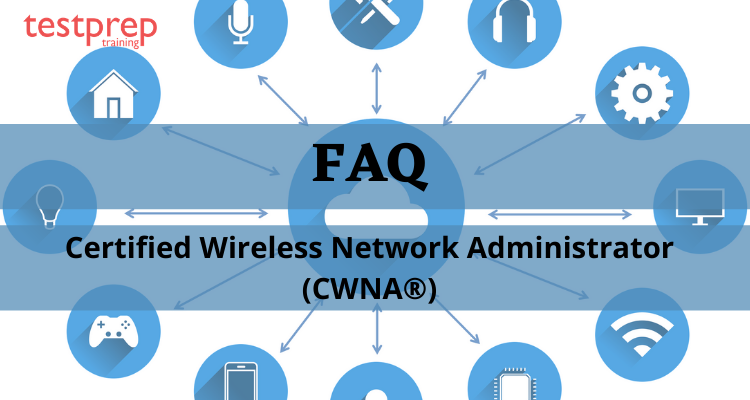Certified Wireless Network Administrator (CWNA®)
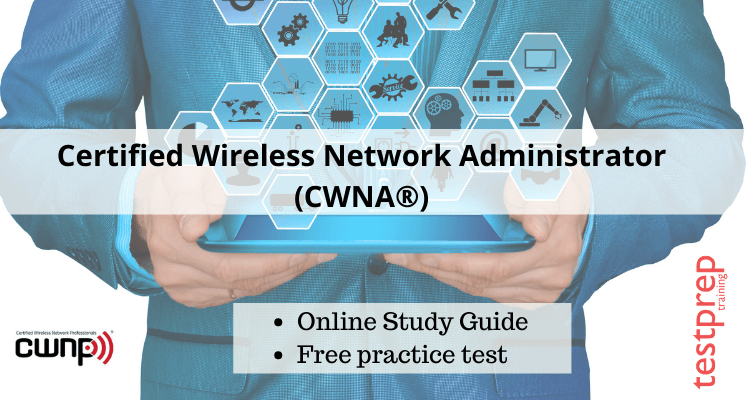
The Certified Wireless Network Administrator (CWNA®) examination is a basic level wireless LAN certification for the CWNP Program. This certification is designed to examine the candidate’s capability to understand the fundamentals of RF behaviour and to explain the features and functions of WLAN components as they utilize to WLAN administration. Also, a candidate’s ability to install, configure, and troubleshoot WLAN hardware peripherals and protocols in small business and enterprise deployments is examined.
Exam Overview
The Certified Wireless Network Administrator (CWNA®) examination consists of 60 multiple choice / multiple answers. The time limit to complete the examination is 90 minutes. Also, this examination is available in the English language only. You need to get a minimum percentage of 70% to pass the examination. This examination will cost you $225. Also, the exam code is CWNA-107.
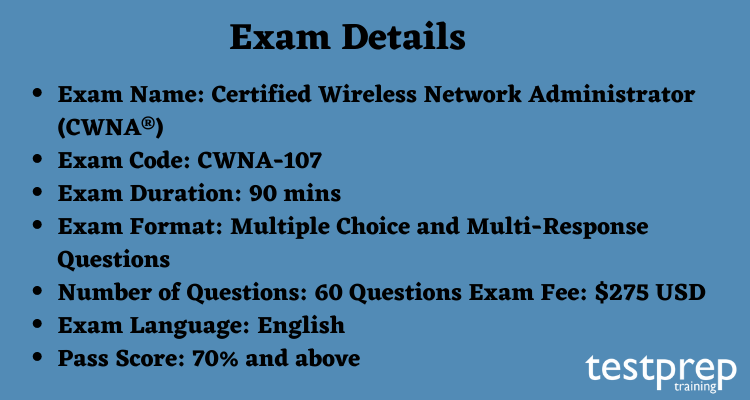
Exam Registration for Certified Wireless Network Administrator
Since you are planning to register for the examination, you can follow the below mentioned steps:
- Go to the official page of Certified Wireless Network Administrator (CWNA®)
- Then scroll down to exam registration
- You will be diverted to the Pearson VUE page. Then schedule your examination according to your need.
- If you already have an account with Pearson VUE sign in else sign up for a new account. Select the exam Code.
- Follow the given instruction and complete the process.
- You will receive confirmation from the mail after the registration.
Certified Wireless Network Administrator FAQ
For more information, click Certified Wireless Network Administrator (CWNA®) FAQ
Course Outline for Certified Wireless Network Administrator
Radio Frequency (RF) Technologies – 15%
Define and explain the basic characteristics of RF and RF behavior
- Wavelength, frequency, amplitude, phase, sine waves
- RF propagation and coverage
- Reflection, refraction, diffraction and scattering
- Multipath and RF interference
- Gain and loss
- Amplification
- Attenuation
- Absorption
- Voltage Standing Wave Ratio (VSWR)
- Return Loss
- Free Space Path Loss (FSPL)
- Delay Spread
- Modulation (ASK and PSK)
Apply the basic concepts of RF mathematics and measurement
- Watt and milliwatt
- Decibel (dB)
- dBm, dBd and dBi
- Noise floor
- SNR and SINR
- RSSI
- Signal metric conversions
- System Operating Margin (SOM), fade margin, and link budget calculations
- Intentional Radiator compared with Equivalent Isotropically Radiated Power (EIRP)
Identify RF signal characteristics as they relate to antennas
- RF and physical line of sight and Fresnel zone clearance
- Beamwidths
- Azimuth and Elevation charts
- Passive gain vs. active gain
- Isotropic radiator
- Polarization
- Antenna diversity types
- Radio chains
- Spatial multiplexing (SM)
- Transmit Beam Forming (TxBF)
- Maximal Ratio Combining (MRC)
- MIMO and MU-MIMO
Explain and apply the functionality of RF antennas and antenna systems and the mounting options and antenna accessories available
- Omni-directional antennas
- Semi-directional antennas
- Highly directional antennas
- Sectorized antennas and antenna arrays
- Reading antenna charts for different antenna types
- Pole/mast mount
- Ceiling mount
- Wall mount
- Indoor vs. outdoor mounting
- RF cables, connectors and splitters
- Amplifiers and attenuators
- Lightning arrestors and grounding rods/wires
- Towers, safety equipment and related concerns
WLAN Regulations and Standards – 10%
Explain the roles of WLAN and networking industry organizations
- IEEE
- Wi-Fi Alliance
- IETF
- Regulatory domains and agencies
Explain the IEEE standard creation process including working groups, naming conventions, drafts and ratification
Explain and apply the various Physical Layer (PHY) solutions of the IEEE 802.11-2016 standard as amended including supported channel widths, spatial streams, data rates, and supported modulation types
- DSSS – 802.11
- HR-DSSS – 802.11b
- OFDM – 802.11a
- ERP – 802.11g
- HT – 802.11n
- DMG – 802.11ad
- VHT – 802.11ac
- TVHT – 802.11af
- S1G – 802.11ah
Identify and apply 802.11 WLAN functional concepts
- Modulation and coding
- Co-location interference
- Channel centers and widths (all PHYs)
- Primary channels
- Adjacent overlapping and non-overlapping channels
- Throughput vs. data rate
- Bandwidth
- Communication resilience
Describe the OSI model layers affected by the 802.11-2016 standard and amendments
Define the frequency bands used by the 802.11 PHYs
Identify and comply with regulatory domain requirements and explain how to determine constraints within a regulatory domain
- Available channels
- Output power constraints
- Dynamic Frequency Selection (DFS)
- Transmit Power Control (TPC)
Explain basic use case scenarios for 802.11 wireless networks
- Wireless LAN (WLAN) – BSS and ESS, PAN (WPAN), bridging and Ad-Hoc (IBSS)
- Wireless Mesh (MBSS)
WLAN Protocols and Devices – 20%
Describe the components that make up an 802.11 wireless service set
- Stations (STAs)
- Basic Service Set (BSS)
- Basic Service Area (BSA)
- SSID
- BSSID
- Extended Service Set (ESS)
- Ad Hoc mode and IBSS
- Infrastructure mode
- Distribution System (DS)
- Distribution System Media (DSM)
- Roaming (Layer 1 and Layer 2)
Identify and explain the basic frame types defined in the 802.11-2016 standard
- General frame format
- MAC addressing
- Beacon frame
- Association frames
- Authentication frames
- Data frames
- Acknowledgment (ACK) frames
- Block ACK frames
Explain the process used to locate and connect to a WLAN
- Scanning (active and passive)
- Authentication
- Association
- Open System Authentication and Shared Key authentication
- 802.1X/EAP and Pre-Shared Key authentication
- BSS selection
Define terminology related to the 802.11 MAC and PHY
- MSDU, MPDU, PSDU, and PPDU
- A-MSDU and A-MPDU
- Guard Interval
- Interframe spaces
- Fragmentation
- PHY preamble
Explain 802.11 channel access methods
- DCF
- EDCA
- RTS/CTS
- CTS-to-Self
- NAV
- Physical carrier sense and virtual carrier sense
- Channel width operations
- HT Operation Modes
- VHT Operating Mode field
- HT and VHT protection mechanisms
- Power save modes
Describe features of, select and install WLAN infrastructure devices
- Autonomous Access Points (APs)
- Controller-based APs
- Cloud-based APs
- Distributed APs
- Management systems
- Mesh APs and routers
- WLAN controllers
- Remote office controllers and/or APs
- PoE injectors and PoE-enabled Ethernet switches
- WLAN bridges
- Home WLAN routers
Identify the features, purpose, and use of the following WLAN client devices and adapters
- USB adapters
- PCI, Mini-PCI, Mini-PCIe and Half Mini-PCIe cards
- Laptops, tablets and mobile phones
- 802.11 VoIP handsets
- Specialty devices (handheld scanners, push-to-talk, IoT)
- Configure Windows, Linux, Chrome OS, and macOS clients
WLAN Network Architecture – 20%
Identify technology roles for which WLAN solutions are appropriate and describe the typical use of WLAN solutions in those roles
- Corporate data access and end-user mobility
- Enterprise network extension
- WLAN bridging
- Last-mile data delivery – Wireless ISP
- Small Office/Home Office (SOHO) use
- Mobile offices
- Educational/classroom use
- Industrial
- Healthcare
- Hotspots
- Hospitality
- Conference/convention/arena/stadium and large high density deployments
- Transportation networks (trains, planes, automobiles)
- Law enforcement networks
Describe and implement Power over Ethernet (PoE)
- IEEE 802.3-2012, Clause 33, including 802.3af-2003 and 802.3at-2009
- Power Source Equipment
- Powered Device
- Midspan and endpoint PSEs
- Power levels
- Power budgets and powered port density
Define and describe controller-based, distributed, cloud-based, and controller-less WLAN architectures
- Core, Distribution and Access layer forwarding
- Centralized data forwarding
- Distributed data forwarding
- Control, Management and Data planes
- Scalability and availability solutions
- Intra- and Inter-controller STA roaming handoffs (OKC and FT)
- Advantages and limitations of each technology
- Tunneling, QoS and VLANs
Define and describe a multiple channel architecture (MCA) network model and contrast it with a single channel architecture (SCA) model
- BSSID and ESS configuration
- Channel selection
- AP placement
- Co-channel and adjacent channel interference
- Cell sizing (output power, antenna selection)
Match WLAN deployment requirements commonly specified to technology solutions
- Data
- Voice
- Video
- Real-Time Location Services (RTLS)
- Mobile devices (tablets and smartphones)
- High density
- Airtime Fairness
- Band steering
- HotSpot 2.0/Passpoint certification
- Radio Resource Management (RRM) and Adaptive Radio Management (ARM)
- BYOD
- Guest access
- Mobile device management (MDM)
- Network Access Control (NAC)
Determine and document required network services supporting the WLAN
- DHCP
- DNS
- NTP
- VLANs
- RADIUS
- Access Control Lists
- Wired network capacity requirements
- Cable lengths
- Cable types
WLAN Network Security – 10%
Identify weak security options that should not be used in enterprise WLANs
- WEP
- Shared Key authentication
- SSID hiding
- MAC filtering
- Improper use of WPA (TKIP/RC4)
- Open System authentication alone, with the exception of intentional public networks
- Wi-Fi Protected Setup (WPS)
Identify and configure effective security mechanisms for enterprise WLANs
- WPA2 (CCMP/AES)
- WPA2-Personal
- WPA2-Enterprise
- 802.1X/EAP framework
- RADIUS servers
- EAP methods
- Effective pre-shared key (PSK) and passphrase usage
- Per-User PSK (PPSK)
Describe and select common security enhancements and tools used in WLANs
- Captive portals
- BYOD and guest networks
- Protected management frames
- Fast Secure Roaming methods
- Wireless Intrusion Prevention System (WIPS)
- Protocol and spectrum analyzers
Explain and use secure management protocols
- HTTPS
- SNMPv3
- SSH2
- VPN
RF Validation – 10%
Explain the importance of and the process of a post-implementation validation survey
- Verify design requirements
- Coverage
- Capacity
- Throughput
- Roaming
- Delay
- Jitter
- Connectivity
- Aesthetics
- Document actual WLAN implementation results
Locate and identify sources of RF interference
- WLAN devices
- Co-Channel Interference (CCI)
- Adjacent Channel Interference (ACI)
- Non-Wi-Fi devices
- Airtime utilization
- Frequencies used
- Interference solutions
- Spectrum analysis
Perform application testing to validate WLAN performance
- Network and service availability
- VoIP testing
- Real-time application testing
- Throughput testing
- Load testing
Understand and use the basic features of validation tools
- Throughput testers (iPerf, TamoSoft Throughput Tester, etc.)
- Wireless design software (Ekahau Site Survey, iBwave Wi-Fi, AirMagnet Survey Pro,
- TamoSoft Survey, Aruba RFPLan)
- Protocol analyzers
- Spectrum analyzers
WLAN Troubleshooting – 15%
Define and apply industry and vendor recommended troubleshooting processes to resolve common 802.11 wireless networking problems
- Identify the problem
- Discover the scale of the problem
- Define possible causes
- Narrow to the most likely cause
- Create a plan of action or escalate the problem
- Perform corrective actions
- Verify the solution
- Document the results
Describe and apply common troubleshooting tools used in WLANs
- Protocol analyzer
- Spectrum analyzer
- Centralized management consoles
- WLAN monitoring solutions
Identify and explain how to solve the following WLAN implementation challenges using features available in enterprise-class WLAN equipment and troubleshooting tools
- System throughput
- CCI and ACI
- RF noise and noise floor
- RF interference
- Hidden nodes
- Insufficient PoE power
- Lack of coverage
Troubleshoot common connectivity problems in WLANs (both WLAN connectivity and network connectivity for wireless clients)
- No signal or weak signal
- Security configuration mismatch
- Improper AP configuration
- Improper client configuration
- Faulty drivers/firmware
- Hardware failure
- DHCP issues
- Captive portal issues
Exam Policies
Since you are planning to give the examination, it is a suggestion to check and read the exam policies. For Certified Wireless Network Administrator (CWNA®) you can check the official website. We have provided a few of them to help you out.
Exam Reschedule Policy
Candidates who want to reschedule their online proctored exam must contact Pearson VUE or access an online Pearson VUE account to reschedule the exam up until the scheduled start time of your appointment. However, failure to reschedule before your appointment time or failure to appear for your appointment will result in the forfeiture of your exam fee.
Cancellation Policy
To cancel the online proctored exam candidates must contact Pearson VUE or access your online Pearson VUE account to cancel your exam up until the scheduled start time of your appointment. However, failure to cancel before your appointment time or failure to appear for your appointment will result in the forfeiture of your exam fee.
Preparatory Guide for Certified Wireless Network Administrator (CWNA®)
It is now time to prepare for the Certified Wireless Network Administrator (CWNA®). To help you out with your preparation, our experts have designed this preparatory guide for you. Boost your chances to qualify Certified Wireless Network Administrator with expert learning resources.
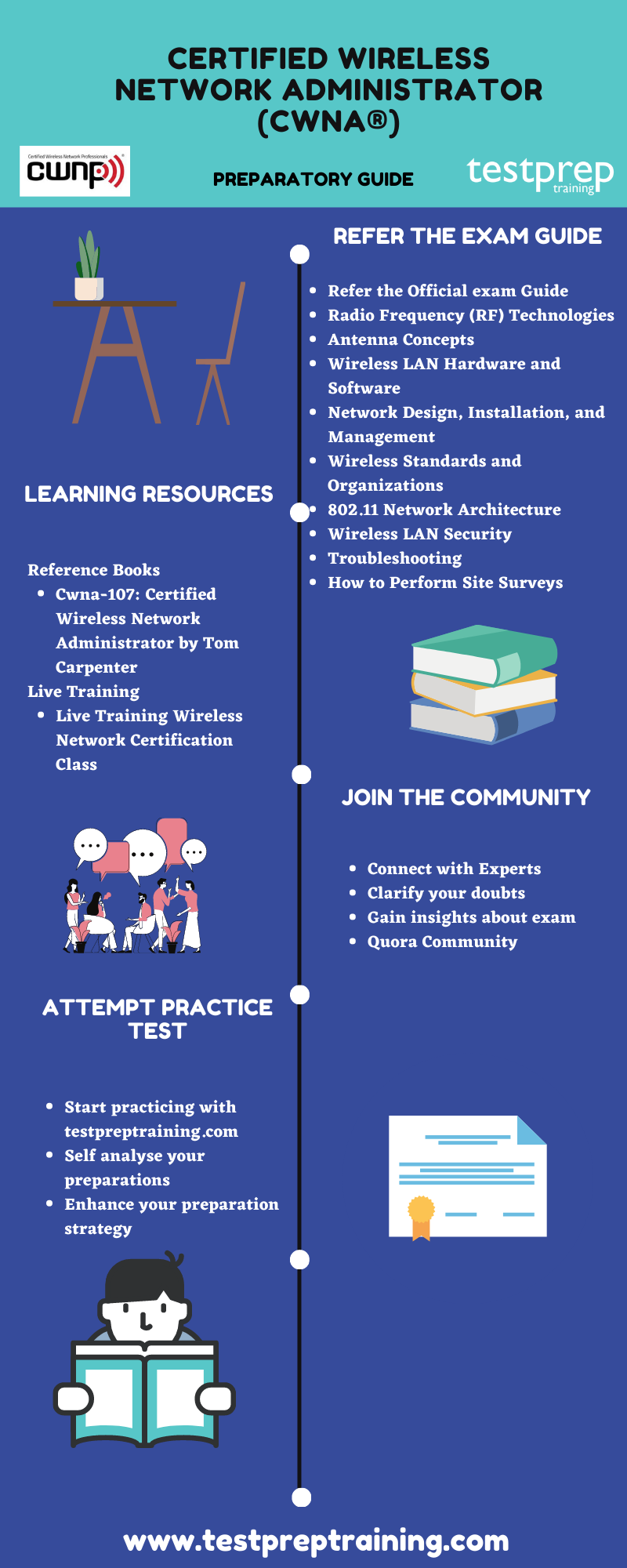
Refer the Exam Guide
Now you are planning to prepare, however, before starting your preparation you need to aware of the exam objectives. To solve your problem we have provided with the exam objectives for Certified Wireless Network Administrator (CWNA®).
- Radio Frequency (RF) Technologies
- Antenna Concepts
- Wireless LAN Hardware and Software
- Network Design, Installation, and Management
- Wireless Standards and Organizations
- 802.11 Network Architecture
- Wireless LAN Security
- Troubleshooting
- How to Perform Site Surveys
Learning Resources
Since you are now aware of the exam objectives, it is time to start your preparation. We have provided you with learning resources that will help you ace the examination.
Live Training
The Live Training Wireless Network Certification Class is specially designed to help you prepare for the Certified Wireless Network Administrator (CWNA®) examination. You can choose your location and class timings according to your comfort. This training will help you develop all the necessary skills to clear the examination.
Reference Books
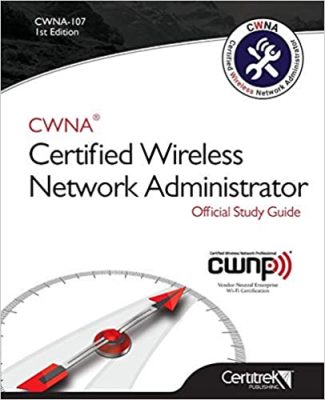
Books play an important role when it comes to preparing for any examination. To help you prepare for the Certified Wireless Network Administrator (CWNA®) we have provided a few of the reference books. You can buy these books from all leading online stores.
- Cwna-107: Certified Wireless Network Administrator by Tom Carpenter
Join a Community
Engaging oneself in a study group will encourage and help the candidate to learn more. The discussions in the group will help them to develop the necessary knowledge required to clear the examination. Interacting with the people who have the same career path will be an added advantage. Therefore, practice, discuss and study to become a successful Certified Wireless Network Administrator (CWNA®).
Practice Test
To ace anything you need to practice it and for the practice, you need sample papers and test series which will give you the experience of the real-time examination. We at Testprep provides you with the test series, specially designed for Certified Wireless Network Administrator (CWNA®). Start practicing now!


